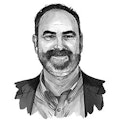We all learn from our mistakes. But it’s easier, cheaper and less embarrassing to learn from other’s mistakes. The good news for you is that I’ve made many and I’m going to share my three biggest ones in this column. I’m nearing the end of my 18th year as an owner in this industry, though I’ve been around it for 50 years via my dad’s shop. With our 50-year anniversary, I’ve been wondering what I would have done differently if I started now. My hope is that this column will serve someone starting out or in the early days of their career in this industry. For those willing to learn from my mistakes, this is like a cheat sheet for success. It could even save you thousands of dollars and loads of time if you will trust me and treat these like shortcuts to success. So, if I had to start over now, here are three things I would do differently.
Foundations are expensive to fix
First, I would not have scaled so fast. Even though I didn’t launch my second location until after 12 years in, I would have waited another couple of years. I wasn’t ready for a second location! As soon as I launched shop No. 2, both shops were destabilized. My original shop depended on my daily leadership but was now only getting half of my time at best. And the new shop with a full team of very skilled technicians just lost their leader and mentor who had been there for decades. In fact, he trained many of them himself from apprentices to A-techs. What ended up happening in the absence of clear processes was I had two shops running in two different ways. Right about then, another opportunity came along that I didn’t want to miss. Rather than unifying the operations, I almost immediately jumped into a third shop.
A better foundation was needed. Clear, documented processes. Unified procedures on everything from how to greet customers to parts handling to payroll. Instead, I had two shops mostly winging it and then layered the third shop on top of that. There was no symmetry, very little integration, and a shaky foundation. Foundations are complicated and expensive to fix once the building has been erected.
Hire from within the industry
Second, I hired way too many people from outside the industry. I figured if I hired smart and dedicated people—many of whom were my friends—they would learn quickly and all would be well. I hired smart, dedicated people and to their credit they learned a lot in a short period of time. However, I didn’t account for how much they would have to learn and how long it takes to gain mastery in this industry. It wasn’t fair to them. I basically threw them in the deep end and said, “Swim!” Thankfully the friendships in all cases survived and continue to this day. But none of them were able to make it into a long-term career. The lesson for me here was that, while friendships are critical to an overall successful life, they should not be the basis for hiring. In retrospect, I was trying to fill my need for friendship through hiring. Big mistake.
Visionaries and integrators
Lastly, I would have found my right hand man quicker. I’ve learned from Gino Wickman (author of Traction) that there are two kinds of leaders: visionaries and integrators. I am clearly and unapologetically a visionary. But I needed an integrator. For the longest time, I had a co-pilot who was a dear friend but he was also a visionary. That meant that we had a lot of ideas and were willing to take risks. We were always ready to grow fast and try new things. Yet we rarely got sustainable traction. Integrators like my current co-pilot, Keith Foster, know how to take vision and translate it to the street level. Keith is able to take all the cloudy ideas of an entrepreneurial organization like ours and make them concrete, understandable, and repeatable.
In conclusion, Keith and I were not friends when we started working together. We became friends through our shared mission to improve and scale our organization. Keith and my daughter, Zoe, were able to shore up the shaky foundations of our early days. They integrated all shops on many important things like a unified benefits package, a consistent compensation plan and role descriptions between all shops.
In writing this, it became clear that my biggest “mistakes” really relate to one another. And in the past year, big strides were made to correct these early mistakes and stabilize the whole organization. Our future feels bright. And I want to remind myself and any readers that early mistakes can be overcome. We’re living proof. It would have been easier not to make them, of course. But in retrospect, it came down to some really basic things that allowed us to course-correct: integrated processes and getting the right team members in the right roles.
I wish you great success as you learn from your own and more importantly from other’s mistakes.
About the Author

Kevin Rains
Kevin Rains is the owner of Rains CARSTAR Group with locations in Cincinnati, Ohio; West Chester, Ohio; and Lexington, Kentucky. He is also an industry consultant. He can be reached at [email protected].
